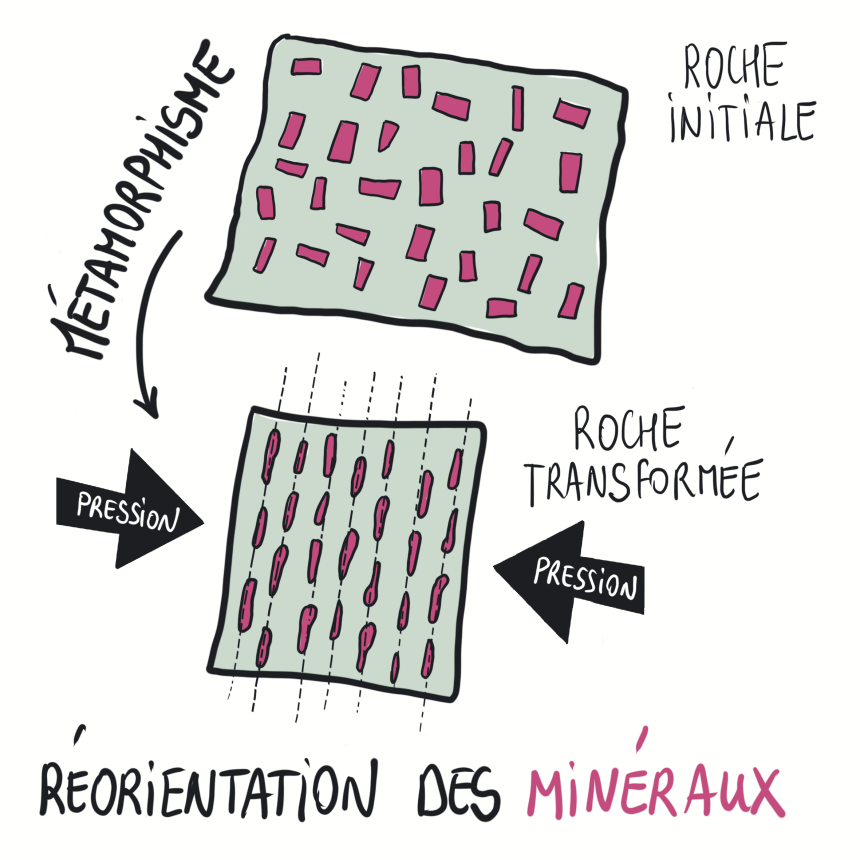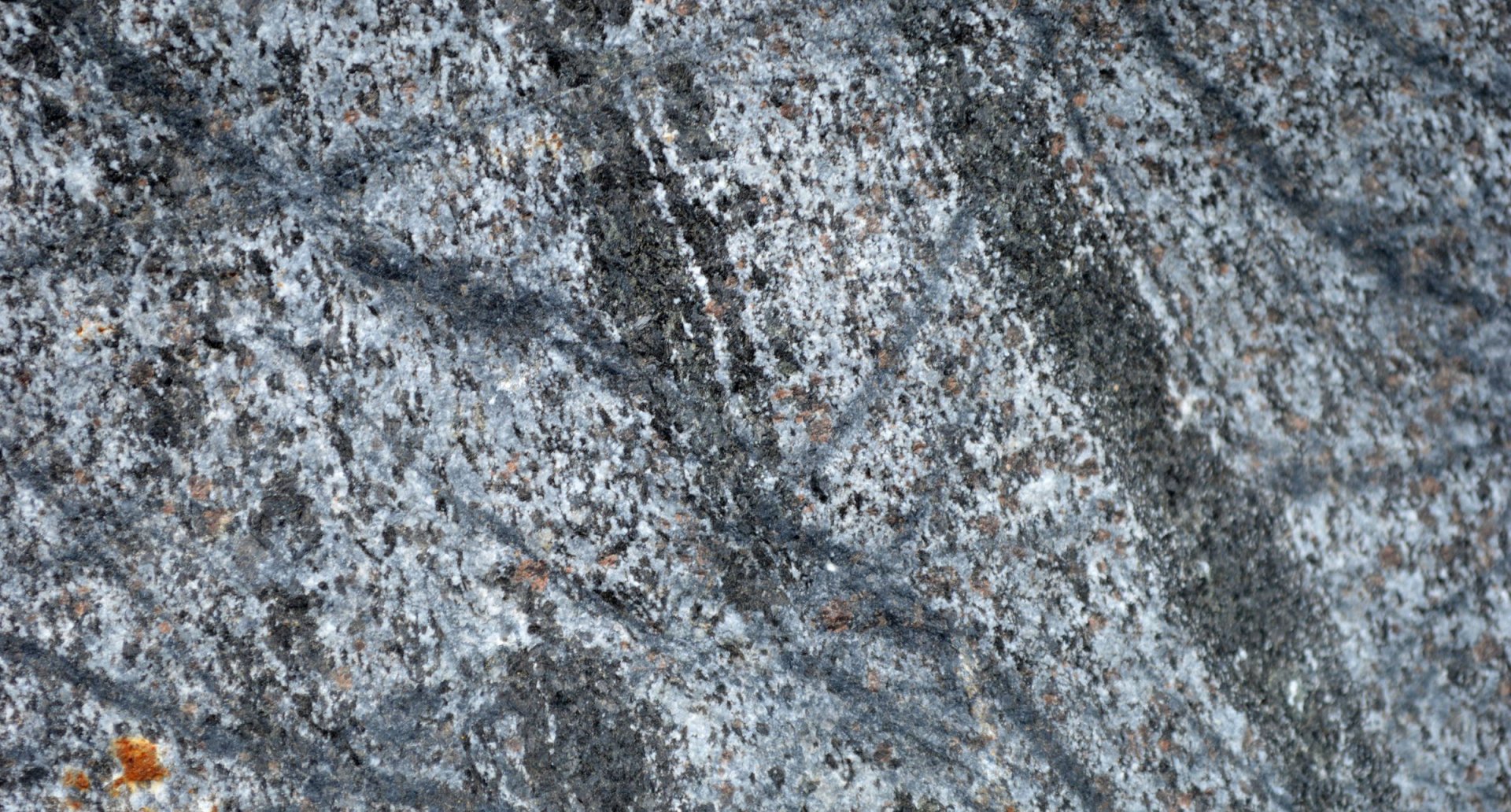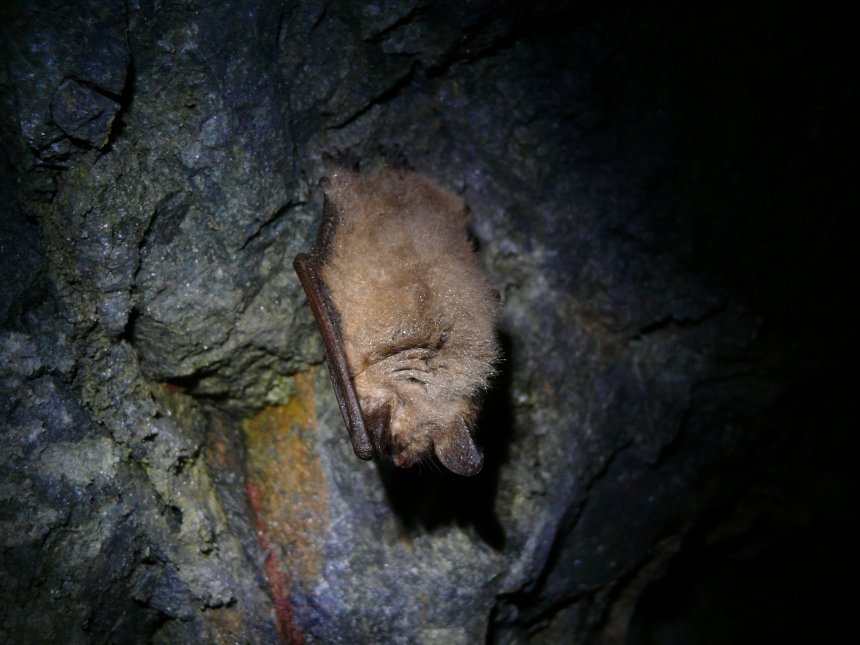Stone : garnet-bearing amphibolite
Type : metamorphic rock derived from a magmatic rock
Age : 602 ± 8 million years (gabbro)
Quarry : la Croix Gibat, Trégueux (Côtes d’Armor)
A Metamorphosed Gabbro
This rock is striped, banded, and foliated—it displays alternating dark layers rich in amphiboles (hornblende) and light layers rich in plagioclase. It is also sprinkled with small red garnet crystals. This was once a gabbro, a rock characteristic of oceanic crust.
Dust, Be Gone!
Dust management in a quarry is taken very seriously. These fine mineral particles are airborne and hazardous when inhaled daily. They can cause lung diseases such as asbestosis (from asbestos) or silicosis (from silica). In dry weather, quarry workers spray water on the tracks used by vehicles, on stockpiles, and cover truck loads with tarps.
What Is Metamorphism?
Rocks move. They shift both horizontally and vertically—a process well explained by plate tectonics. A rock formed at the surface can be buried to depths with higher temperature and pressure. As a result, the rock transforms: its minerals change and reorganize. This is what geologists call metamorphism. This transformation always occurs in the solid state—there’s no melting. If melting happens, the process is called magmatism instead.
During metamorphism, minerals reorient themselves perpendicular to the direction of the highest pressure.

A Bat Tunnel
Quarries are often quickly adopted by local wildlife and plant life. In Trégueux, the Breton Mammal Group helped the quarry operator design a bat tunnel. Today, naturalists from the association monitor bat activity using ultrasound sensors. While the tunnel doesn’t yet house a colony, some rare bat species have already been detected peeking their tiny snouts out…
Brown Long-Eared Bat

